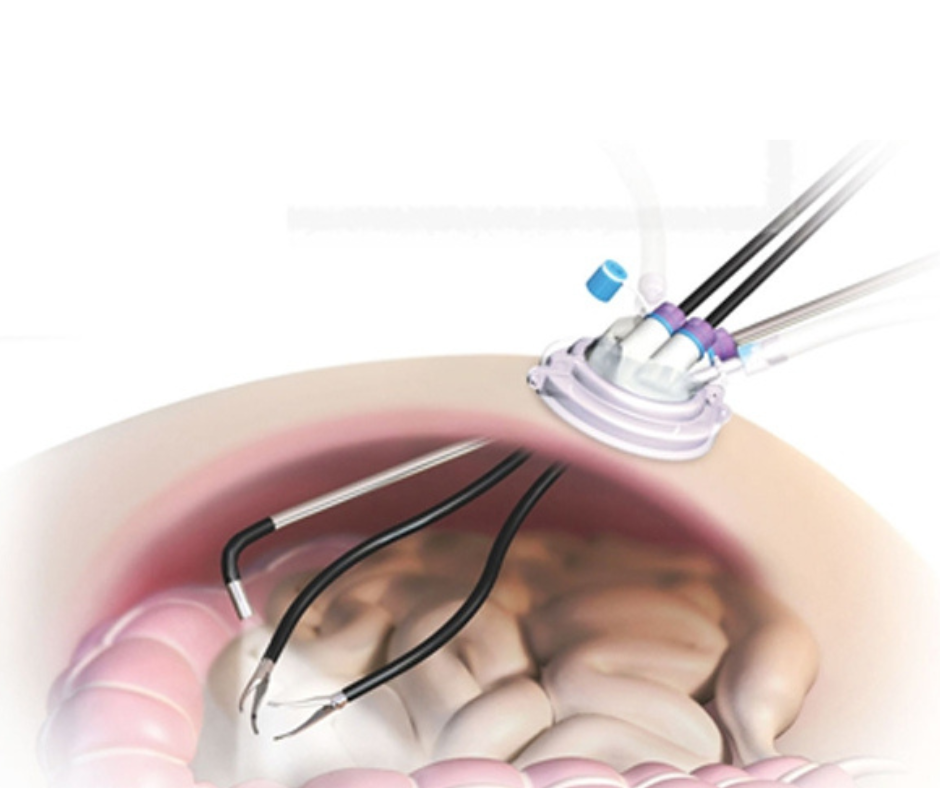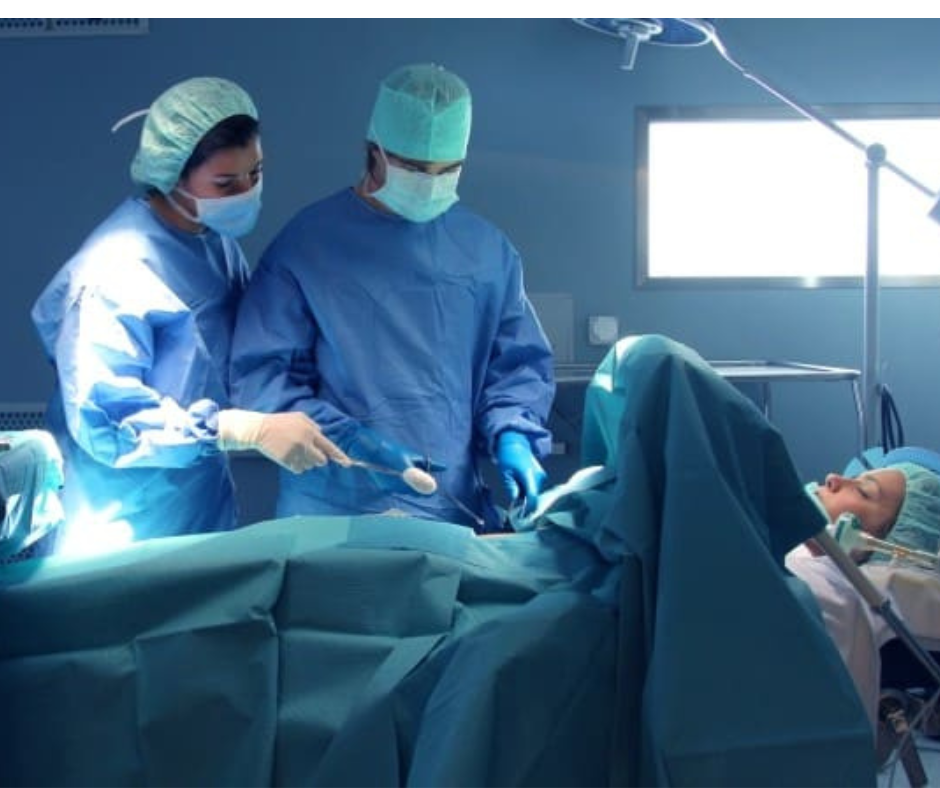SILS Surgery

Welcome to the future of surgical techniques – SILS surgery! If you’re searching for a less invasive approach to surgery, then you’ve come to the right place. Say goodbye to multiple incisions and hello to single incision laparoscopic surgery, where precision meets minimal scarring. In this blog post, we’ll take you on a step-by-step journey through this revolutionary technique, exploring its benefits, risks, preparation tips, and what to expect during and after the procedure. So buckle up and get ready for an enlightening dive into the world of SILS surgery – it’s time for a breakthrough!
What is SILS surgery?
What exactly is SILS surgery? Let’s break it down for you. Single Incision Laparoscopic Surgery, or SILS, is a groundbreaking surgical technique that aims to minimize the number of incisions needed during an operation. Unlike traditional laparoscopic procedures where multiple small incisions are made, SILS surgery involves making just one small incision through which all necessary instruments and a camera are inserted.
The key element of SILS surgery lies in its ability to utilize specialized tools designed specifically for this single-incision approach. These instruments are flexible enough to navigate within the body while still providing surgeons with precise control and visibility. The camera used in SILS surgery enables surgeons to have a clear view inside the body, ensuring accurate placement of instruments and reducing the risk of complications.
One major advantage of SILS surgery is its potential for less scarring compared to traditional open surgeries or even standard laparoscopic techniques. By minimizing the number of incisions required, patients may experience reduced postoperative pain and faster recovery times.
It’s important to note that not all surgical procedures can be performed using SILS techniques due to complexity or limitations associated with certain conditions. Your doctor will evaluate your specific case and determine if you’re a suitable candidate for this innovative procedure.
SILS surgery represents a significant advancement in minimally invasive procedures by utilizing only one small incision instead of several. This technique offers potential benefits such as reduced scarring and quicker recovery times for eligible patients seeking surgical treatment options.
The benefits of SILS surgery
The benefits of SILS surgery are numerous and can make a significant difference in the lives of patients. One of the main advantages is that it involves only a single incision, which means less scarring compared to traditional laparoscopic surgeries. This can be especially important for those who are concerned about their appearance or self-conscious about surgical scars.
Additionally, SILS surgery typically results in less post-operative pain and discomfort. With fewer incisions, there is less trauma to the surrounding tissues, leading to quicker recovery times. Patients often experience reduced pain medication requirements and shorter hospital stays as a result.
Another benefit of SILS surgery is improved cosmetic outcomes. Because the procedure only requires one small incision hidden within the belly button or another inconspicuous location, visible scarring is minimized.
Furthermore, SILS surgery offers potential advantages in terms of better patient satisfaction and overall quality of life. Patients report feeling more confident and satisfied with their surgical outcomes due to enhanced cosmetic results and minimal scarring.
It’s important to note that not all patients may be suitable candidates for SILS surgery depending on various factors such as previous abdominal surgeries or underlying medical conditions. Consulting with an experienced surgeon will help determine if you’re a good candidate for this revolutionary technique

The risks of SILS surgery
The risks of SILS surgery are important to consider before undergoing this revolutionary technique. While SILS surgery offers many benefits, it is not without its potential complications.
One risk of SILS surgery is the possibility of infection at the incision site. Since the procedure involves making a single incision, there is an increased chance for bacteria to enter and cause an infection. Strict adherence to sterile techniques can help minimize this risk.
Another potential risk is bleeding during or after the procedure. Since SILS surgery involves manipulating delicate structures within the body, there is a small chance that blood vessels could be damaged, leading to bleeding. Surgeons take precautions to control any bleeding that may occur.
There is also a risk of organ damage during SILS surgery. The use of specialized instruments and cameras allows surgeons to navigate through narrow spaces with precision, but there are still inherent risks involved in working inside the body.
In some cases, conversion from SILS surgery to traditional laparoscopic or open surgery may be necessary if unexpected difficulties arise during the procedure. This can increase operative time and potentially lead to additional risks and complications.
It’s important for patients considering SILS surgery to have a thorough discussion with their surgeon about all potential risks and weigh them against the benefits before making a decision on whether or not to proceed with this technique

How to prepare for SILS surgery
Preparing for SILS surgery is an important step towards ensuring a successful procedure and smooth recovery. Here are some key steps to help you prepare:
1. Consultation with the surgeon: Before undergoing SILS surgery, it’s crucial to have a detailed consultation with your surgeon. They will assess your medical history, conduct physical examinations, and discuss the procedure in detail.
2. Pre-operative tests: Depending on your overall health condition, your surgeon may request certain pre-operative tests such as blood work, imaging scans, or EKGs. These tests help evaluate any underlying conditions that may impact the surgery.
3. Medications and dietary restrictions: Your surgeon will provide specific instructions regarding medication intake before surgery. It’s important to inform them about any medications you’re currently taking or allergies you have. Additionally, they might advise you to follow a specific diet leading up to the surgery.
4.Preparing for anesthesia: If general anesthesia is required for SILS surgery, your anesthesiologist will provide guidelines on fasting prior to the procedure.
5.Arranging transportation and support: Since SILS surgery involves minimally invasive techniques and usually requires only one incision point (hence its name), most patients can return home on the same day of their operation.
However,it’s recommended that you arrange for someone to drive you home after discharge from the hospital as movement could be uncomfortable initially.
Remember, every individual’s preparation process may vary slightly based on their unique circumstances.
To ensure optimal results,follow all instructions given by your healthcare team diligently.
During SILS surgery, you can expect a minimally invasive procedure that offers several benefits. The surgeon will make a small incision in your navel and insert specialized instruments to perform the surgery. One of the main advantages of SILS is that it leaves only one scar, which is hidden within your belly button, resulting in improved cosmetic outcomes.
After the surgery, you may experience some discomfort and pain around the incision site. However, this tends to be minimal compared to traditional open surgery. You might also feel bloated or have gas pains as your body adjusts after the procedure.
Recovery time varies depending on the specific surgery performed during SILS. Some patients are able to go home on the same day or within 24 hours after their operation. It’s important to follow your surgeon’s post-operative instructions carefully for optimal healing.
In terms of activity level, most patients can resume light activities within a week or two after SILS surgery. However, strenuous physical activities should be avoided for several weeks while you fully recover.
It’s essential to attend all scheduled follow-up appointments with your surgeon so they can monitor your progress and address any concerns or complications that may arise during the recovery period.
Remember that every patient’s experience may differ slightly based on individual factors such as overall health and the complexity of their surgical procedure. Your surgeon will provide personalized guidance regarding what you can expect during and after SILS surgery based on your specific situation.
Alternatives to SILS Surgery
While single incision laparoscopic surgery (SILS) is a groundbreaking technique, it may not be the best option for everyone. Thankfully, there are alternative surgical procedures available that can achieve similar results.
One such alternative is traditional laparoscopic surgery, which involves making several small incisions instead of just one. This method allows the surgeon to access and manipulate organs using long, thin instruments. While more incisions are made with this approach, it still offers many benefits over open surgery, including shorter recovery time and reduced scarring.
Another option is robotic-assisted surgery, where a surgeon controls robotic arms equipped with tiny instruments from a console. This advanced technology provides enhanced precision and control during the procedure. Robotic-assisted surgery often leads to faster healing times and less postoperative pain compared to traditional methods.
In certain cases, non-surgical alternatives such as medication or lifestyle changes may also be viable options. These alternatives aim to address specific health conditions without the need for invasive procedures.
It’s important to consult with your healthcare provider about which alternative is best suited for your individual needs. They will consider factors like your medical history, condition severity, and personal preferences when recommending an appropriate course of action.
Remember: every patient is unique!
Single incision laparoscopic surgery (SILS) is a groundbreaking technique that offers numerous benefits for patients requiring minimally invasive procedures. With its ability to minimize scarring, reduce pain and discomfort, and shorten recovery time, SILS has become an attractive option for many individuals seeking surgical treatment.
While there are risks associated with any surgical procedure, the advancements in technology and techniques have significantly minimized potential complications related to SILS surgery. It is crucial for patients to discuss the procedure thoroughly with their healthcare provider and weigh the potential benefits against the risks before making a decision.
Preparation plays a vital role in ensuring a successful SILS surgery. Following your surgeon’s instructions regarding fasting, medication management, and lifestyle modifications can help optimize your overall health status before undergoing the procedure.
During the surgery itself, you can expect to be under general anesthesia while your surgeon makes a single incision through which multiple instruments will be inserted. The precise nature of SILS allows surgeons to perform complex procedures with minimal invasiveness.
After the surgery, it is normal to experience some discomfort or soreness at the incision site. However, most patients recover relatively quickly compared to traditional open surgeries or even conventional laparoscopic procedures.
Although SILS presents significant advantages over other surgical techniques, it may not be suitable for everyone or every condition. Depending on individual circumstances or specific medical conditions, alternative approaches such as traditional open surgery or multiport laparoscopy may still be recommended by your healthcare provider.
As always, it is essential to consult with an experienced surgeon who specializes in minimally invasive techniques like SILS when considering this form of treatment. They will evaluate your unique situation and determine if you are an appropriate candidate for this innovative approach.
Overall (without using “overall”), single-incision laparoscopic surgery holds tremendous promise in revolutionizing surgical care across various specialties from gynecology to urology and beyond. With its potential to enhance patient outcomes, reduce recovery time, and improve cosmetic results

